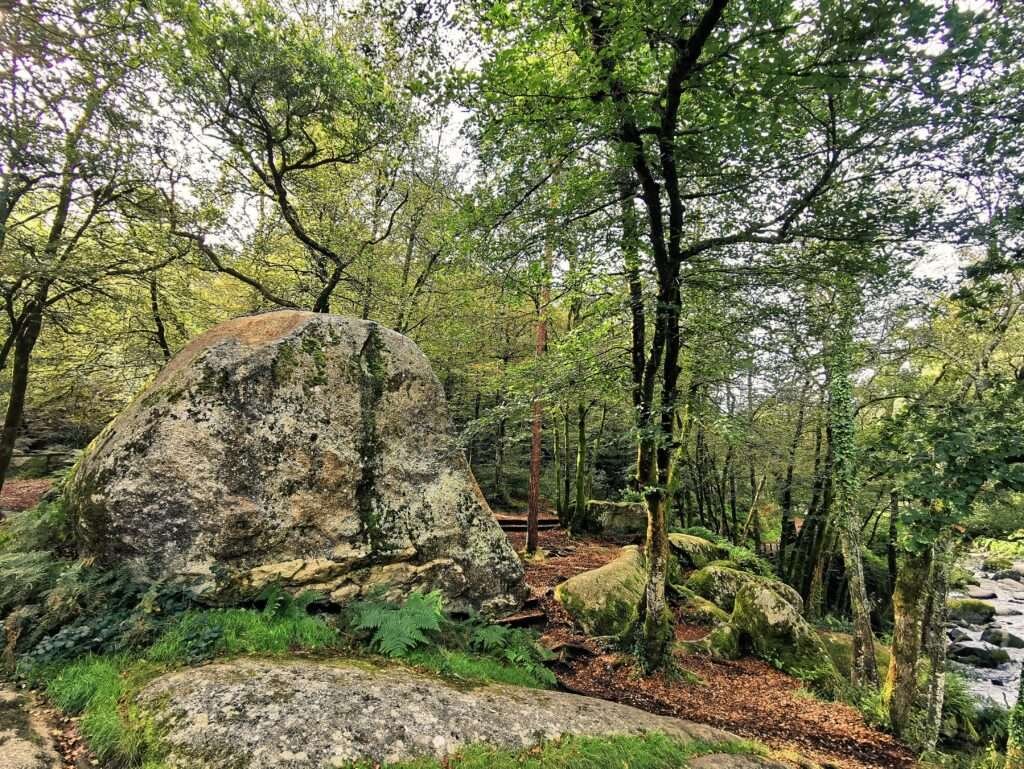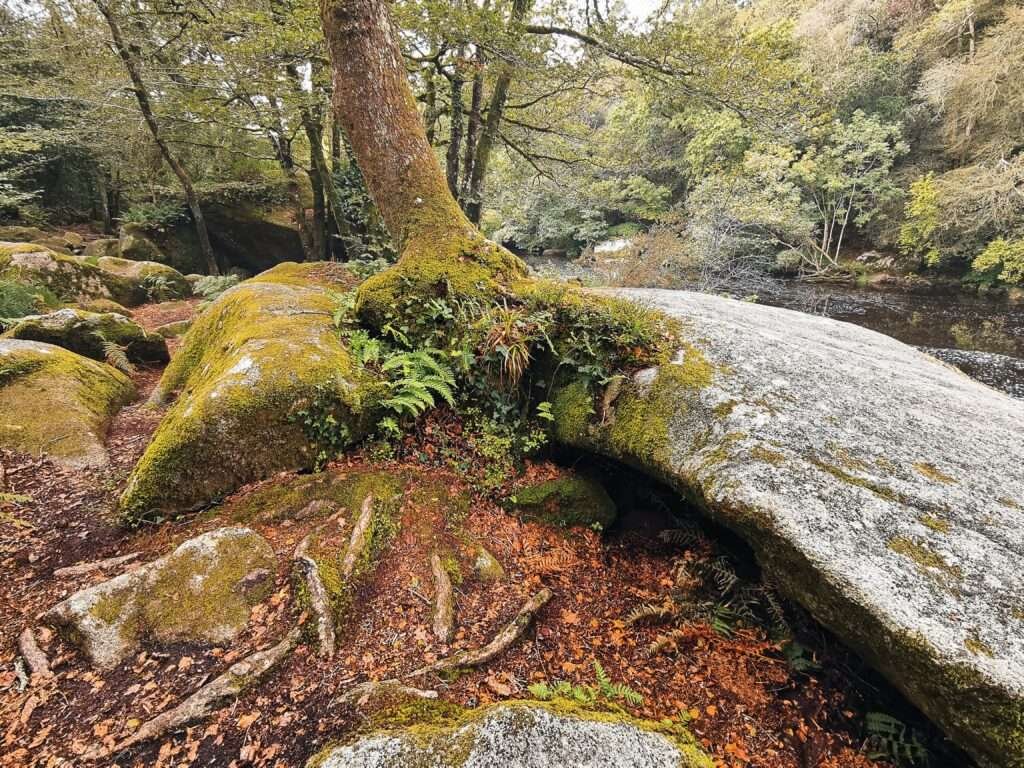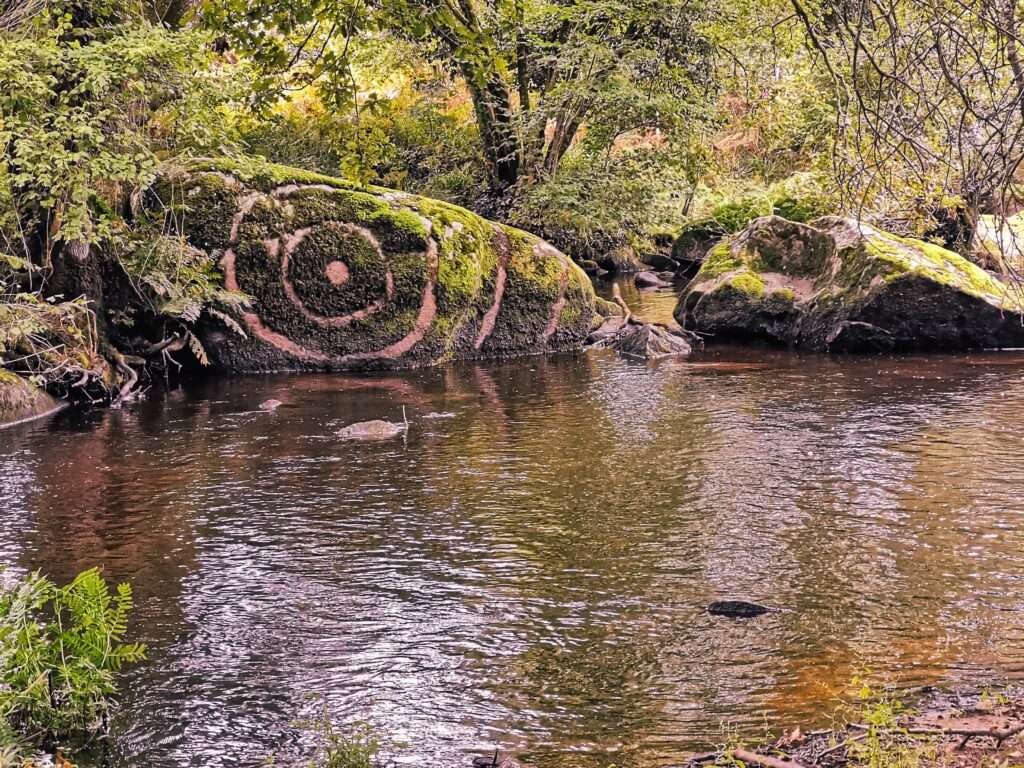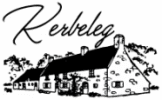In the heart of the Ellé valley, an impressive natural site comes to life, combining age-old legends and wild beauty. The Roches du Diable (Devil’s Rocks), a place where hell and holiness clashed, transport you into a mysterious and majestic world. Discover the fascinating history of this wooded and undulating region between Le Faouët and Quimperlé, where the river Ellé plays the leading role.
The Rocky Chaos of the Roches du Diable
At the end of a gorge nearly 80 metres deep and stretching for 6km, the River Ellé offers a breathtaking surprise. For 300 metres, it transforms into an impressive rocky chaos. The tumultuous waters of the river tumble down the slope, weaving their way between huge boulders, creating rapids and whirlpools. The imposing, rounded granite boulders that clutter the riverbed are the result of millions of years of erosion.
The legends of the Roches du Diable

Several legends surround this bewitching place. One of them tells of the confrontation between the Devil, incarnated by Paolig, and Saint Guénolé. The saint founded the parish of Locunolé, provoking the anger of the devil, who tried to eliminate him by hurling huge rocks at him. However, Saint Guénolé deflected the danger with a sign of the cross, leaving the rocks to pile up on the shore. A fierce battle ensued, with the devil clinging to the rock and leaving his claws in the stone. In the end, Saint Guénolé triumphed, dragging the devil into the river and creating the legendary “Devil’s Hole”.
Another legend tells of a pact between Saint Guénolé and the Devil to build a bridge. According to this agreement, the first person to cross the bridge would be taken by the devil. Saint Guénolé sent a cat or a squirrel, depending on the version, to trick the devil. In anger, the devil smashed the bridge and plunged into the Ellé, creating an unfathomable abyss.

The Pont-Neuf and the Forgotten Treasure
After the Pont-Neuf was built, the Devil, angered, plunged into the Ellé, creating an impassable chasm. One mystery remains: where is the Devil’s treasure, abandoned when he fled? The banks of the Ellé abound in rocks, but the precise location remains unknown. A black goose and its pups, sent by the devil, protect the treasure with ferocity.
L’Ellé : The River of Hell
The name Ellé derives from the Old French “Ellez”, meaning hell. The river begins its course in Le Faouët, at the foot of the Chapelle Sainte-Barbe, carving out the Armorican plateau. Downstream, it calms down as it enters Quimperlé, where it joins the Isole to form the Laïta. Rue Dom-Morice takes you back to the 16th century, with its timber-framed houses and irregular paving.
Discover the Roches du Diable
Between Le Faouët and Quimperlé, in a wooded and undulating countryside, the Roches du Diable form an imposing landscape. From the top of the winding paths, you’ll discover an impressive chaos of granite boulders, where the river Ellé rushes past. If the flow accelerates, the rapids can become diabolical once again, attracting top kayakers for thrilling competitions.
Les Roches du Diable, a place where nature and Breton mythology meet, invites you to a memorable adventure in the heart of Brittany. Explore this corner of the valley where mystery and beauty combine to create an unforgettable experience.







